#dryopteridaceae
Photo
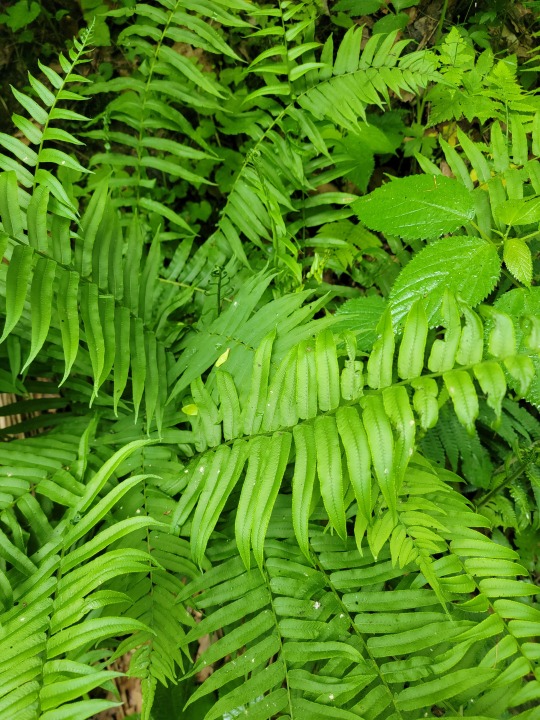
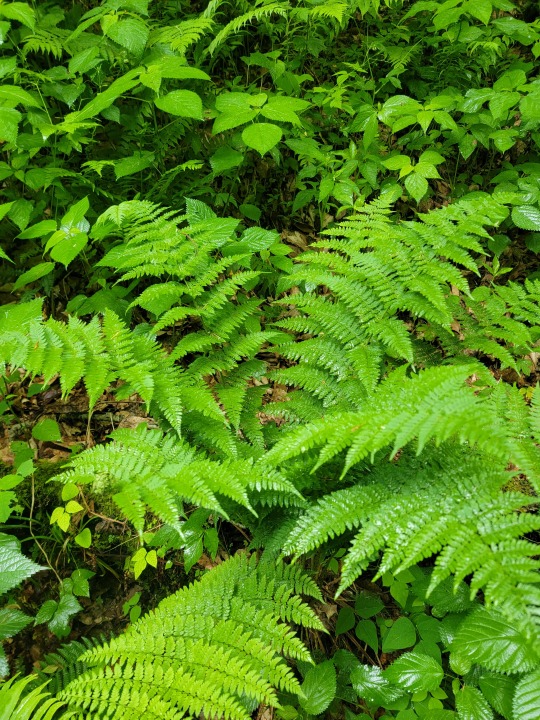
Two members of the shield fern family, Dryopteridaceae
Diplazium pycnocarpon, glade fern, prefers high moisture and humidity and does well in dense shade, often I see this species not in glades but in ravines prone to some flooding living away from the bashside of rocks(sheltered side) and as a chasmophyte, a crack dwelling plant; but to clarify it is lithophitic, rock loving, but not having an epipetric( living on rocks soley) habit.). (epipetric is a delineate rock obligate)
Dryopteris marginalis, marginal wood fern/shield fern, more generalistic to light often on embankments and highly organic soil. I feel like this one is more generalistic than most and is almost as common as christmas fern.
#ferns#kentucky#ky#dryopteridaceae#diplazium#dryopteris#dryopteris marginalis#diplazium pycnocarpon#epipetric#chasmophyte#lithophite#jargon#botany
13 notes
·
View notes
Text
#1905 - Polystichum vestitum - Prickly Shield Fern
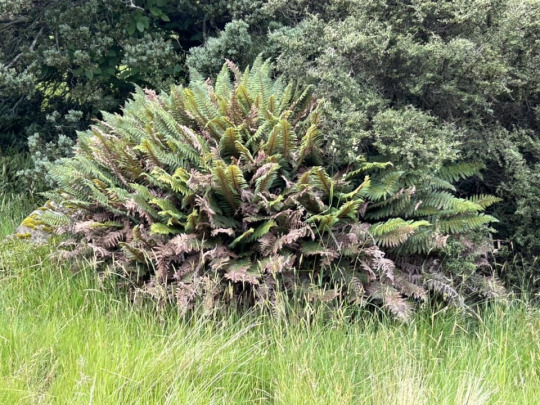
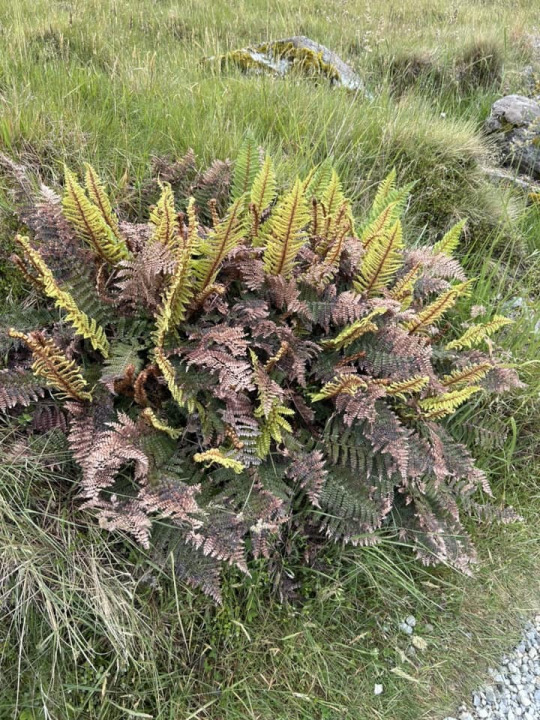
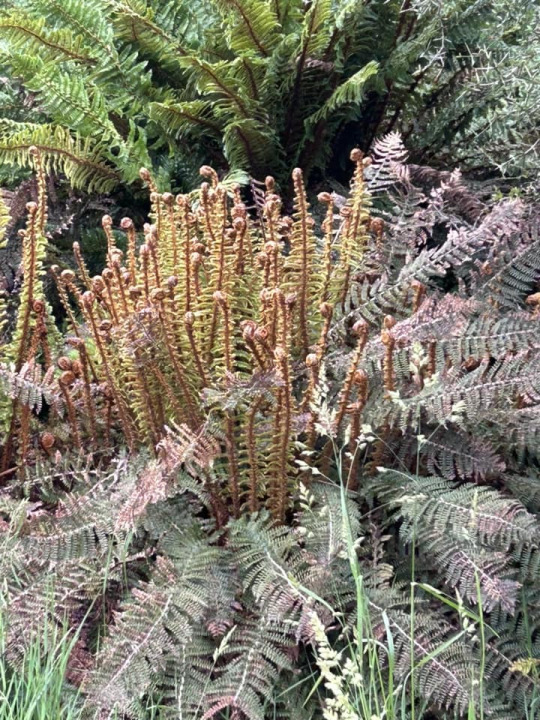
Also known as pūnui. Polystichum refers to the parallel rows of spore cases on the underside of the fronds, and vestitum (Latin for "clothed") denotes the dense cover of the scales on its leaf stalks. Fronds grow up to 600mm in length.
An evergreen or semi-green, cold-tolerant fern most common on New Zealand’s South Island, and a wide spread of Subantarctic islands.
In the northern part of its range P. vestitum is confined to montane regions or where temperature inversions keep the climate cold, but further south it can grow right down to the coast. Found in exposed habitats, such as forest margins, gulley floors and tussock grasslands, but it also commonly extends into forest in colder, wetter parts of New Zealand. On Macquarie Island it dominates the fernbrake communities, but is severely threatened by rabbits.
These ones were high in the middle of the South Island near Aoraki Mount Cook. It can be grown in cultivation, quite easily, but it slow to establish. Insect predators of the fern include the the tiny caterpillar of the "pūnui spore-eater", the "pale fern looper", and the "zigzag fern looper".
8 notes
·
View notes
Text
Polystichum imbricans, Narrowleaf Sword Fern
Polystichum imbricans, Narrowleaf Sword Fern
perennial fern
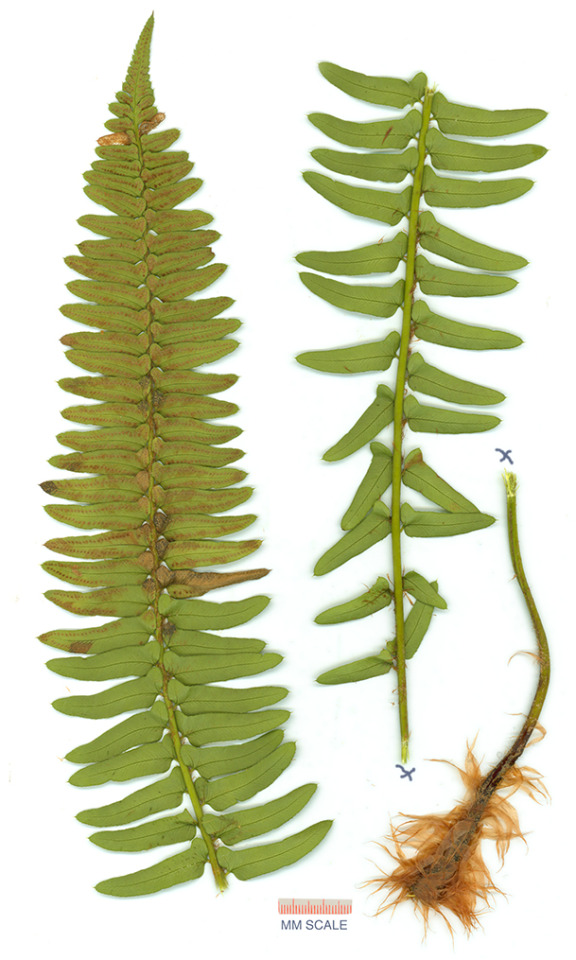

KEY
terrestrial plant with no flowers or bulbs sporangia present
Herbs reproducing by spores released directly from sporangia, the sporangia variously located [on abaxial leaf face, [LYCOPHYTES and FERNS]
Plant terrestrial l; leaf 1-2 pinnate,; sporangia borne on aerial portion of leaf
Leaves all alike or nearly so, the fertile [sporangium-bearing] blades very similar in size and shape to sterile blades sporangia borne on underside of leaf blade, new leaves generally coiled, unrolling as they develop
Sori borne away from margin on underside of leaf or leaflet, sporangia clustered in distinct sori; indusia present
Sori ± round
Blade without needle-like hairs
Indusium peltate or round-reniform, attached ± in center of sorus , generally present and readily observable in late-season specimens ..... DRYOPTERIDACEAE
- Indusium peltate , centrally attached, without a sinus
- Veins generally free, rarely ± joined; leaf 1–3-pinnate, teeth, generally including bristle-like tips, < 4 mm ..... POLYSTICHUM
-Leaf generally 1-pinnate, rarely to partly 2-pinnate; pinnae generally simple, ± entire to serrate, in Polystichum kruckebergii sometimes 1-lobe
Leaf 10–120(200) cm; pinnae simple
Proximal pinnae ovate to lanceolate , ± = to ± 2/3 longest; stipe generally 1/5–1/2 blade
Stipe base scales lanceolate, ± 2–3 mm wide, those above proximal pinnae generally < 1 mm wide, falling early; pinnae ± in 1 plane or not; indusium ± entire to toothed ..... P. imbricans
DESCRIPTION
Rhizome: generally suberect to erect, often stout
Stipe/petiole: generally 1/5--1/2 of blade Stout, firm, generally densely scaly, base scales +- 2--3 mm wide, lanceolate, those above proximal pinnae generally, ×-section with many round vascular strands in an arc.
Blade: narrow-lanceolate to -elliptic, 1-pinnate,, proximal pinnae reduced or not, thin to leathery, scaly, veins generally free, rarely +- jointed; pinna bases often wider acroscopically; teeth, generally including bristle-like tip
Sporangia: sori round; indusium peltate [0 or reniform], sinus 0. indusium +- entire to toothed
SOURCES AND MORE INFORMATION
https://www.itis.gov/servlet/SingleRpt/SingleRpt?search_topic=TSN&search_value=17681#null
https://plants.usda.gov/core/profile?symbol=POIM
https://ucjeps.berkeley.edu/eflora/eflora_display.php?tid=10784
https://www.inaturalist.org/taxa/58763-Polystichum-imbricans
https://calphotos.berkeley.edu
https://www.instagram.com/p/CeFidZIrKxT/
https://wildflowersearch.org/search
Jepson Herbarium Youtube Polystichum Munitum
#Polystichum imbricans#Narrowleaf Sword Fern#polystichum#shield ferns#dryopteridaceae#wood fern#polypodiales#filicopsida#tracheophyta#pteridophyta#cliff sword fern#california native plants#california native#ca native#fern#botany#pinna looks a sword with a hilt
3 notes
·
View notes
Photo

Male fern fronds! This fern is also called “dead man's fist” because its spring sprout resembles a fist rising from underground. Learn more about our online courses on herbal medicine & aromatherapy in jointheflow.net Discover my books on bodywork and more: amzn.to/3xhaNey Male fern is a very poisonous plant. Taking it by mouth can cause death. However, as I said in a previous post, the rhizomes are used as medicine against tapeworms. Bracken fiddleheads is THE fern used as food. I will dedicate another post to bracken flour and fronds (Pteridium spp.). All photos taken by me, all rights reserved. #malefern #dryopteris #ferns #forestbathing #forestbathingtherapy #Dryopteridaceae #ethnobotany #planthealing #phytochemistry #plantchemistry #herbcrafting #herbalcrafting #healingherbs #apothecary #healingherbs #medicinalplants #greekherbs #myherbalstudies #herbalistsofinstagram #botany #botanicalmedicine #wildfood #wildfoodlove #foraging #survivalskills #primitiveskills #herbaleducation #eatweeds (at Βλαχοκερασιά Αρκαδίας) https://www.instagram.com/p/CeSzNWfoy6K/?igshid=NGJjMDIxMWI=
#malefern#dryopteris#ferns#forestbathing#forestbathingtherapy#dryopteridaceae#ethnobotany#planthealing#phytochemistry#plantchemistry#herbcrafting#herbalcrafting#healingherbs#apothecary#medicinalplants#greekherbs#myherbalstudies#herbalistsofinstagram#botany#botanicalmedicine#wildfood#wildfoodlove#foraging#survivalskills#primitiveskills#herbaleducation#eatweeds
0 notes
Text
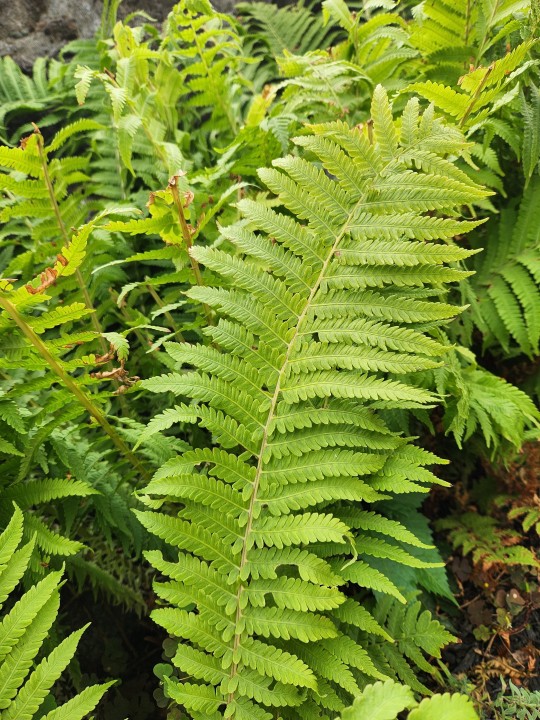
Dryopteridaceae Matteuccia struthiopteris
Ostrich Fern
Identification via Pl@ntNet
1 note
·
View note
Photo
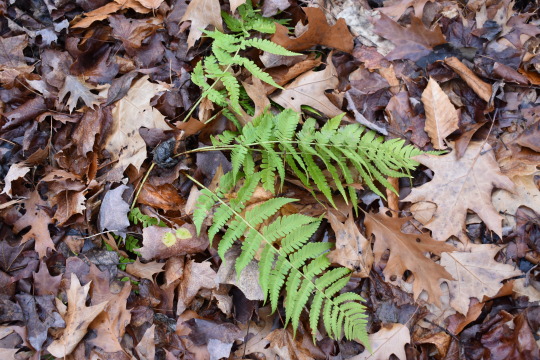
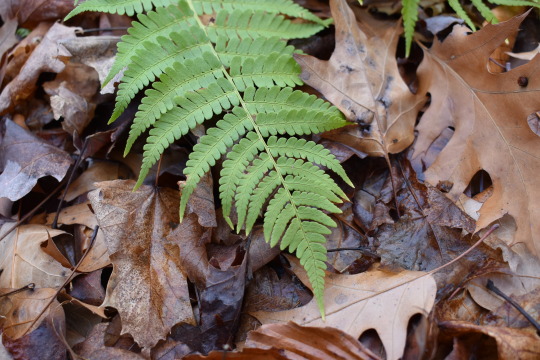
Marginal Wood Fern
Dryopteris marginalis
Dryopteridaceae
Photographs taken on December 5, 2020, at the Niagara Glen Nature Centre, Niagara Falls, Canada.
#wildflowers of southern ontario#Marginal Wood Fern#wood fern#fern#Dryopteris marginalis#Dryopteris#Dryopteridaceae#plants#ferns#leaves#niagara falls#niagara#Niagara Glen Nature Centre#canada#ontario#nature
23 notes
·
View notes
Text
Bolbitis Heteroclita Difformis
Bolbitis Heteroclita Difformis, cuidados y características 🌱
#EnTuAcuario #BolbitisHeteroclitaDifformis #PlantasAcuario #Acuariofilia #Acuarios #Pecera #AcuarioPlantado
La Bolbitis Heteroclita difformis, se trata de una planta que encontraremos en Filipinas, de donde es originaria, y en algunos países asiáticos como Nueva Guinea, Indonesia o Tailandia. Anteriormente se conocía esta planta como Edanyoa Difformis donde se describía como una especie propia.
Pertenece a la familia de las Dryopteridaceae.
Características de la Bolbitis Heteroclita difformis
Es una…
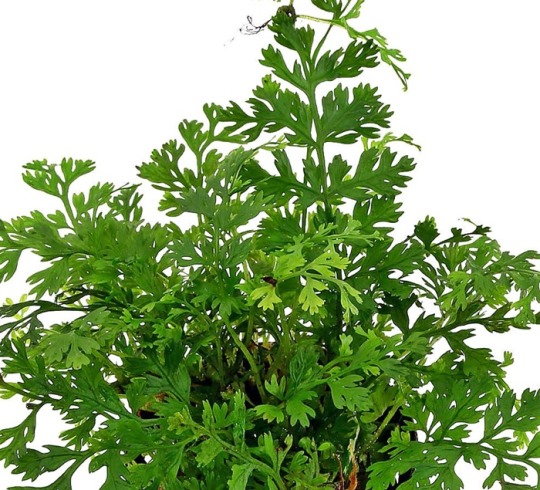
View On WordPress
#Bolbitis Heteroclita Difformis#Dryopteridaceae#Edanyoa Difformis#helechos acuario#Plantas acuario#plantas zona delantera#plantas zona media
1 note
·
View note
Photo

#REPOST @hardyfernfoundation with @get__repost__app Arachniodes standishii showing off in the stumpery #Arachniodesstandishii #Dryopteridaceae #HFF #hardyfernfoundation #hardyferns #fern #stumpery #RSBG #pteridology #pteridophyta #repostandroid #repostw10 https://www.instagram.com/p/CbsFOZTrYKk/?utm_medium=tumblr
#repost#arachniodesstandishii#dryopteridaceae#hff#hardyfernfoundation#hardyferns#fern#stumpery#rsbg#pteridology#pteridophyta#repostandroid#repostw10
0 notes
Video
E20161110-0002—Polystichum munitum—RPBG by John Rusk
Via Flickr:
Polystichum munitum—western sword fern. Found in a wide variety of habitats throughout California as attested by fourteen documented locations within nearly every section of the botanic garden. Note the sporangia on the pinnae showing infusium ciliate when you enlarge the scan. Also note the barely visible teeth on the pinnae. Photographed in Regional Parks Botanic Garden located in Tilden Regional Park near Berkeley, CA.
#pinnae#sporangia#infusium ciliate#taxonomy:kingdom=Plantae#Plantae#taxonomy:clade=Tracheophyta#Tracheophyta#taxonomy:phylum=Pteridophyta#Pteridophyta#taxonomy:class=Filicopsida#Filicopsida#taxonomy:order=Polypodiales#Polypodiales#taxonomy:family=Dryopteridaceae#Dryopteridaceae#taxonomy:genus=Polystichum#Polystichum#taxonomy:species=munitum#taxonomy:binomial=Polystichum munitum#Western Sword Fern#Polystichum munitum#Westamerikanischer Schwertfarn#sword fern#polystic à épées#taxonomy:common=Western Sword Fern#taxonomy:common=Westamerikanischer Schwertfarn#taxonomy:common=sword fern#taxonomy:common=polystic à épées
1 note
·
View note
Photo
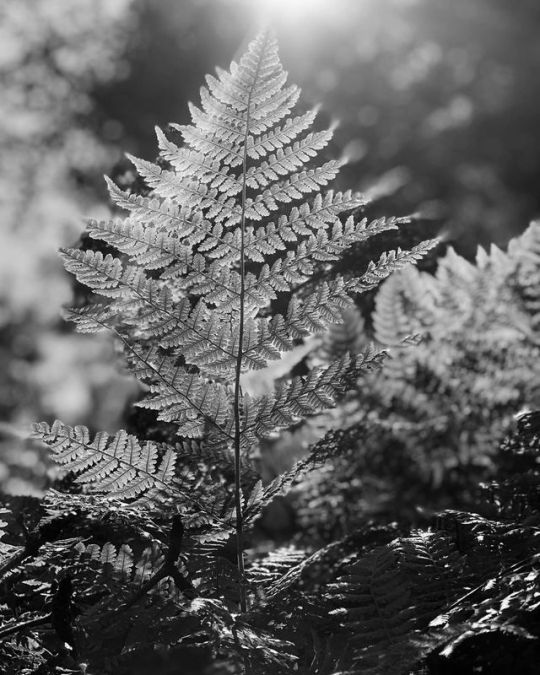
“...and worldly cares are cast out...“ #grosmorne #grosmornenationalpark #newfoundland #canada 🇨🇦 #Dryopteridaceae #woodfern (at Gros Morne National Park) https://www.instagram.com/p/BzqrkaPATCb/?igshid=iy9zflpbybqp
0 notes
Photo
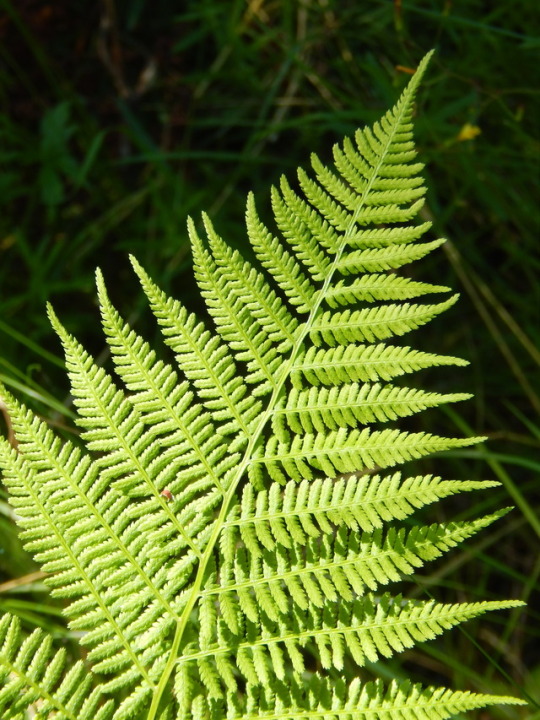
Dryopteris filix-mas, kivikkoalvejuuri
6 notes
·
View notes
Text
#1410 - Cyrtomium falcatum - House Holly-fern
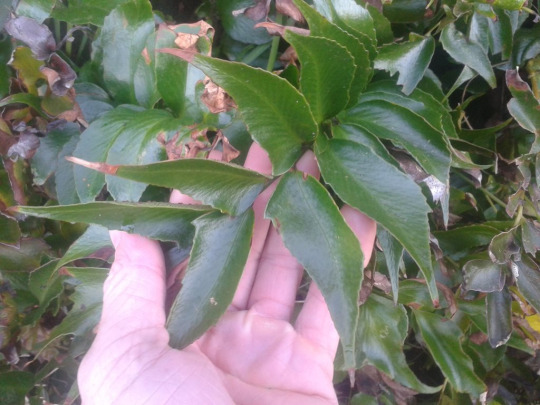

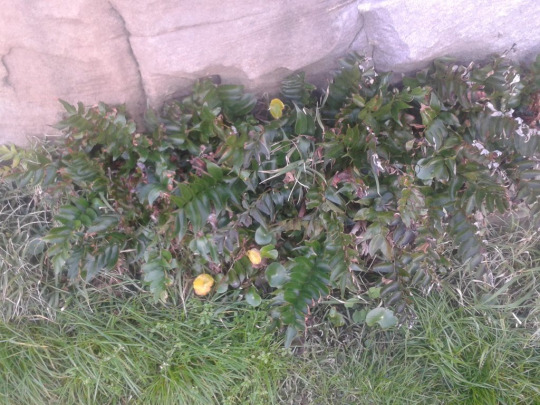
Also known as Japanese Holly-fern, Native to Eastern Asia, and escaped cultivation in much of Europe, North America, the Atlantic Islands, Australia, New Zealand, and South America. That’s the kind of thing that can happen when you have a hardy, frost-tolerant ornamental that can also survive as a houseplant.
In the wild it thrives in crevices in coastal cliffs, stream banks, rocky slopes, and other moist, stable areas. In this case, on my last visit back to Sydney, i found at the bottom of rocky outcrops near the shore at Bare Island.
3 notes
·
View notes
Text
Dryopteris arguta, Coastal or Marginal Wood Fern
Dryopteris arguta, Coastal or Marginal Wood Fern
Dryopteridaceae
native, perennial fern

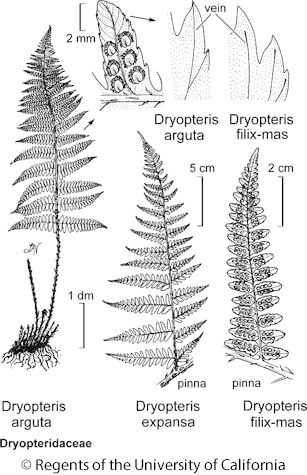
KEY
terrestrial plant with no flowers or bulbs sporangia present
Herbs reproducing by spores released directly from sporangia, the sporangia variously located [on abaxial leaf face, [LYCOPHYTES and FERNS]
Plant terrestrial l; leaf 1-2 pinnate,; sporangia borne on aerial portion of leaf
Leaves all alike or nearly so, the fertile [sporangium-bearing] blades very similar in size and shape to sterile blades sporangia borne on underside of leaf blade, new leaves generally coiled, unrolling as they develop
Sori borne away from margin on underside of leaf or leaflet, sporangia clustered in distinct sori; indusia present
Sori ± round
Blade without needle-like hairs
Indusium peltate or round-reniform, attached ± in center of sorus , generally present and readily observable in late-season specimens ..... DRYOPTERIDACEAE
- Indusium round-reniform, ± centrally attached at a sinus.., DRYOPTERIS
-- Leaf 1–2-pinnate, proximal pinnae <= others, sides ± equal
-- Stipe generally > 1/3 leaf length; longest pinnae generally near blade base; veins into segment teeth, adaxially obscure; scales of pinna midribs lance-ovate to lanceolate ; blade, indusial glands sparse to ± dense; blades thick; ..... D. arguta
DESCRIPTION
Rhizome: anchored in soil or rocky crevices, short and creeping with large scales
Stipe/petiole: firm, base generally darker, with many vascular strands, suberect, or erect, Stipe generally > 1/3 leaf length
Blade: fertile and sterile alike, 1-2 pinnate, Leaf: 1-2 pinnate, longest leaflets at the base near blade base, abaxial veins fork into segment teeth teeth
Sporangia: Round Sori born away from margin on underside of leaf. indusium round-reniform (kidney shaped), centrally attached at a sinus
SOURCES AND MORE INFORMATION
https://www.itis.gov/servlet/SingleRpt/SingleRpt?search_topic=TSN&search_value=17521#null
https://plants.usda.gov/core/profile?symbol=DRAR3
https://ucjeps.berkeley.edu/eflora/eflora_display.php?tid=23524
https://calscape.org/loc-California/Dryopteris%20arguta%20(Coastal%20Wood%20Fern)
https://www.calflora.org/cgi-bin/specieslist.cgi?namesoup=Dryopteris+arguta&countylist=any&plantcomm=any&format=photos&orderby=taxon
https://www.instagram.com/p/CICVtOMJJkB/?utm_source=ig_web_copy_link
https://calphotos.berkeley.edu/cgi/img_query?enlarge=0000+0000+1107+0437
https://calphotos.berkeley.edu/cgi/img_query?where-lifeform=any&rel-taxon=contains&where-taxon=Dryopteris+arguta&rel-namesoup=matchphrase&where-namesoup=&rel-location=matchphrase&where-location=&rel-county=eq&where-county=any&rel-state=eq&where-state=any&rel-country=eq&where-country=any&where-collectn=any&rel-photographer=contains&where-photographer=&rel-kwid=equals&where-kwid=&max_rows=24
#dryopteris arguta#dryopteris#dryopteridaceae#woodfern#wood fern#polypodiales#filicopsida#polpodiopsida#pteridophyta#tracheophyta#california native plants#california native#ca native#fern#california#botany terms seem so unnecessarily complex and sciencey sometimes#like just use the word underside of leaf#do we really have to learn the difference between adaxial and abaxiall? wtf#why!!!#send help#make ferns fun again#maybe i just plant one? to make it relevant#i need a model plant? a staghorn would be cool#whats a fun fact about this plant?#scv native plant#placerita canyon native plant#scv
1 note
·
View note
Photo
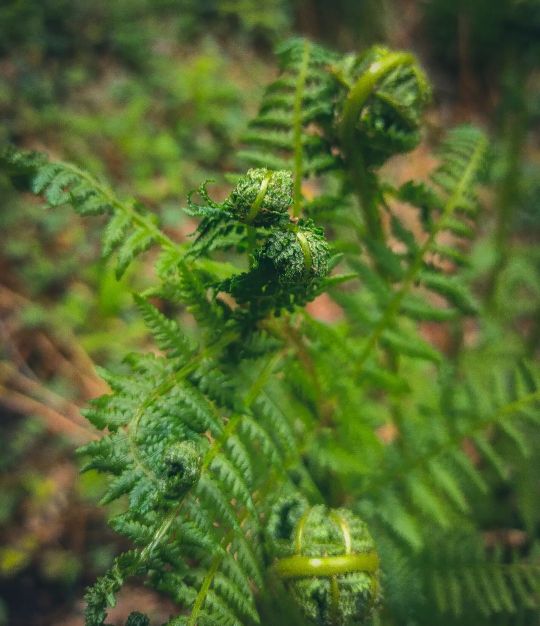
The GORGEOUS male ferns (Dryopteris filix-mas), growing wild in Vlachokerasia forest! Read more below about their medicinal uses. Learn more about our online courses on herbal medicine & aromatherapy in jointheflow.net Discover my books on bodywork and more: amzn.to/3xhaNey The male fern have been one of the most popular and effective treatments for tape worms. The root contains an oleoresin that paralyses tapeworms and other internal parasites and has been used as a worm expellent. The active ingredient in this oleo-resin is 'filicin', roots of this species contain about 1.5 - 2.5% filicin. It is one of the most effective treatments known for tapeworms - its use should be immediately followed by a non-oily purgative such as magnesium sulphate, in order to expel the worms from the body. An oily purge, such as caster oil, increases the absorption of the fern root and can be dangerous. The root is harvested in the autumn and can be dried for later use. This remedy should be used with caution and only under the supervision of a qualified practitioner. The root is toxic and the dosage is critical. Pregnant women and people with heart complaints should not be prescribed this plant. Nowadays, herbalists prefer modern, less toxic remedies for tapeworms. D. filix-mas is culturally named the title plant of Nurmijärvi, the municipality in Uusimaa, Finland. The reason is that the plant is related to the first Finnish pharmaceutical factory located in Nurmijärvi in 1899-1964. The pharmaceutical factory founded by the pharmacist Albin Koponen made Diphyllobothrium latum and cestoda medicines called Filisin and Filicon, the raw material of which was the rhizome of D. filix-mas. The rhizomes were still collected in the locality in the 1960s. #malefern #dryopteris #ferns #forestbathing #forestbathingtherapy #Dryopteridaceae #ethnobotany #planthealing #phytochemistry #plantchemistry #herbcrafting #herbalcrafting #healingherbs #apothecary #healingherbs #medicinalplants #greekherbs #myherbalstudies #herbalistsofinstagram #botany #botanicalmedicine #wildfood #wildfoodlove #foraging #survivalskills #primitiveskills #herbaleducation #eatweeds Photo taken by me. (at Βλαχοκερασιά Αρκαδίας) https://www.instagram.com/p/CdSb6D2oSAv/?igshid=NGJjMDIxMWI=
#malefern#dryopteris#ferns#forestbathing#forestbathingtherapy#dryopteridaceae#ethnobotany#planthealing#phytochemistry#plantchemistry#herbcrafting#herbalcrafting#healingherbs#apothecary#medicinalplants#greekherbs#myherbalstudies#herbalistsofinstagram#botany#botanicalmedicine#wildfood#wildfoodlove#foraging#survivalskills#primitiveskills#herbaleducation#eatweeds
1 note
·
View note
Photo

Dryopteris filix-mas | Athyrium filix-femina | Dryopteris dilatata
#fern#ferns#pteridophyte#pteridophyta#plant#plants#botany#botanical#green#frond#fronds#fern frond#fern fronds#dryopteridaceae#dryopteris#dryopteris filix mas#dryopteris filix-mas#athyrium#athyrium filix-femina#athyrium filix femina#dryopteris dilatata#stefano bonalume#bonalume#vittorian#wood#woodland#forest#shade#garden#nature
37 notes
·
View notes
Text
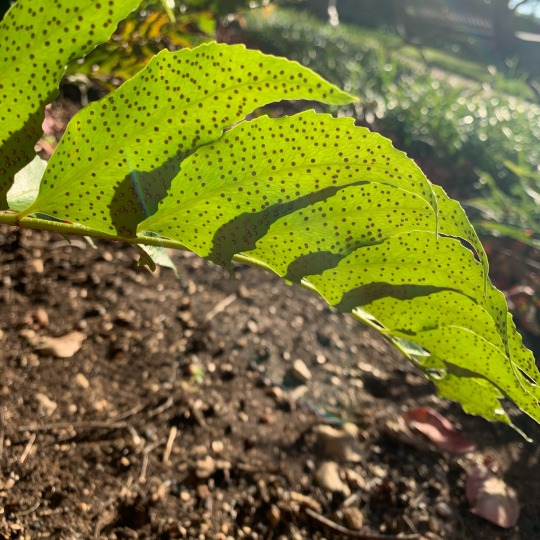
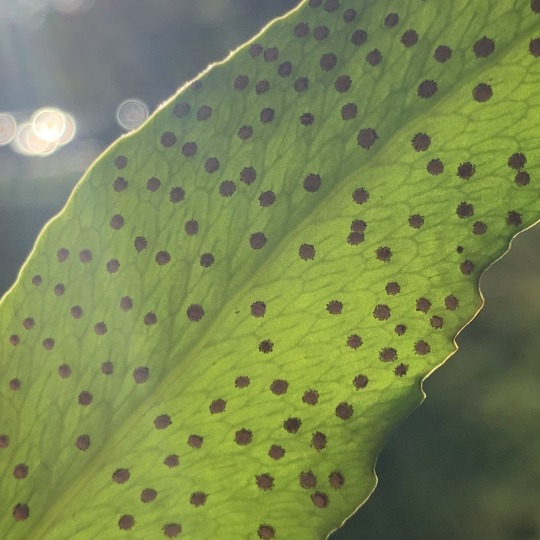
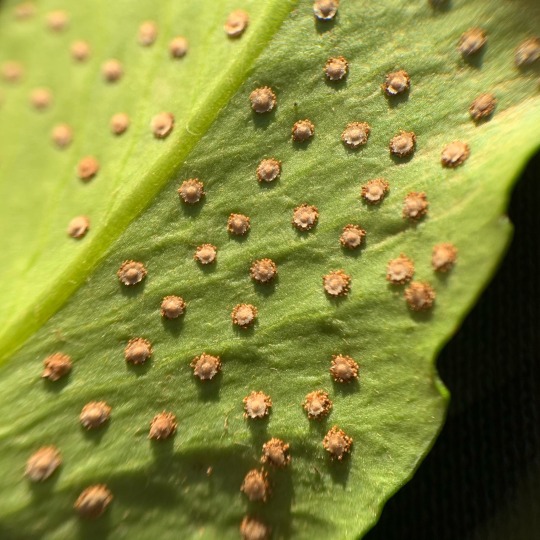
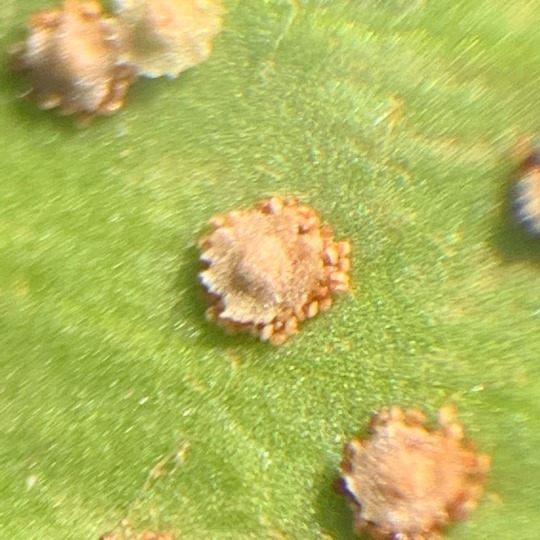
Sori (with indusia) and vasculature of holly fern Cyrtomium falcatum, family Dryopteridaceae.
46 notes
·
View notes